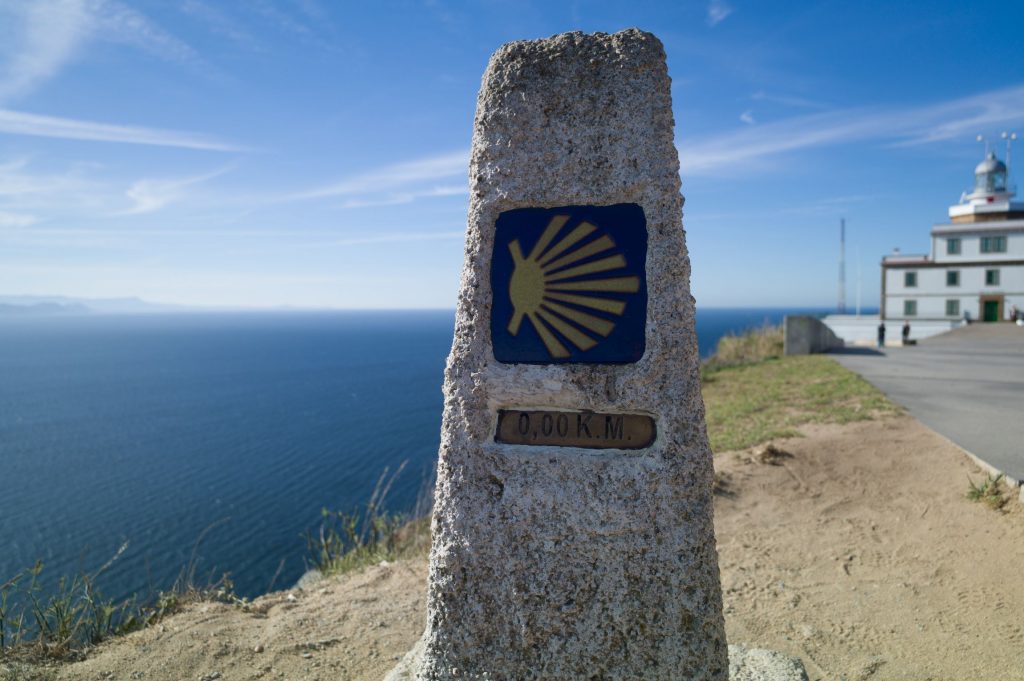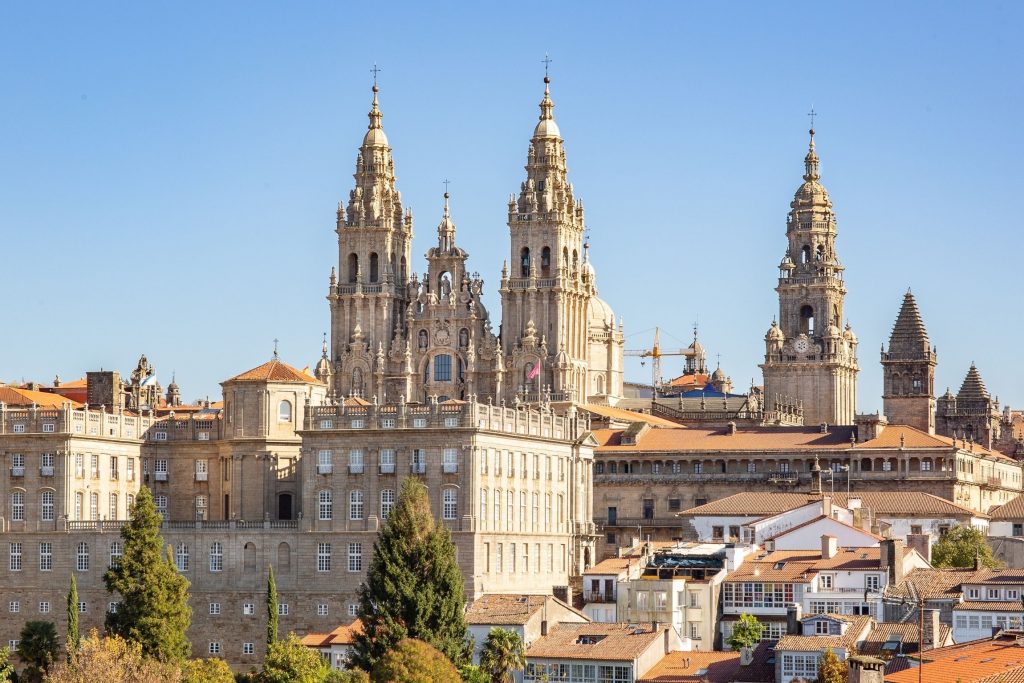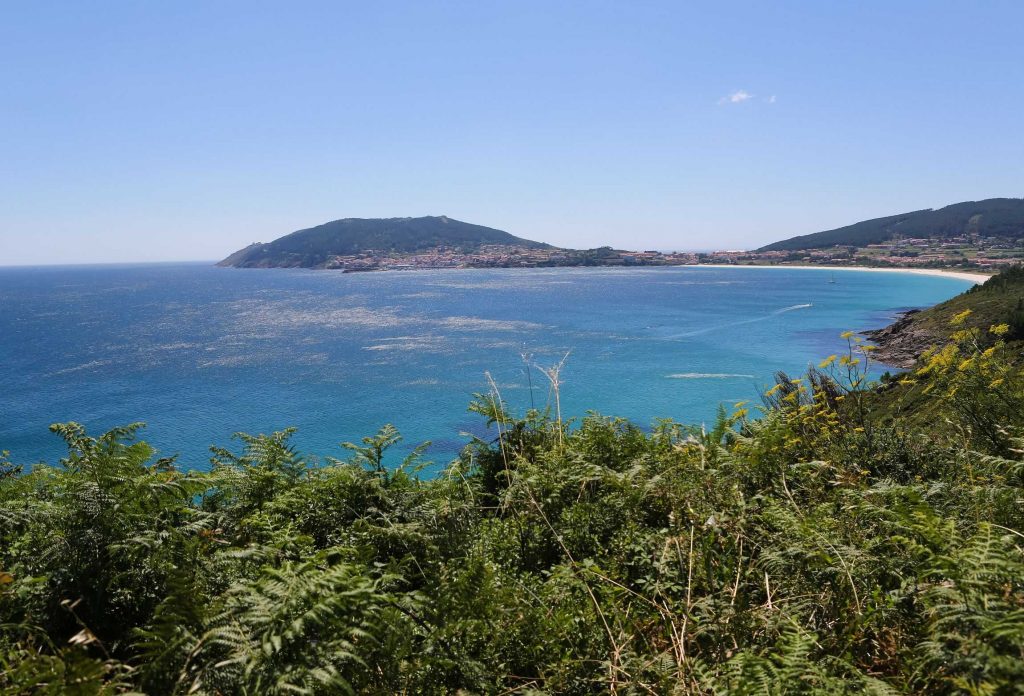It takes four walking days to walk the nearly 90 kms that separate Santiago de Compostela from Cape Fisterra (Fisterra in Galician language) but we recommend you continue for an additional two days to lovely Muxia and its fascinating Our Lady of the Boat Sanctuary (Virxe da Barca), perched on the rocks overlooking the Atlantic Ocean.
Galicia’s Finis-Terrae, the ‘edge of the world’, was believed by pre Christian communities to be ‘Lands End’ and the place were the world of the living got closest to the other world. Many fascinating traditions and myths are alive and well in this beautiful region.
From Santiago de Compostela to Negreira and the town of Cee the route takes pilgrims mainly out of the city and into rural Galicia, walking down country lanes, forest tracks and farmland. As you approach Cee, the first coastal town on the route, you can get your first glimpse of the Atlantic Ocean. From then on, particularly the last stretch of the Camino trail into Muxia, will reward you with wonderful coastal scenery, pristine sandy beaches and stunning views of rugged cliffs and the Atlantic Ocean.
The Camino to Finisterre and Muxia is a great trail particularly from June to September, when can enjoy a swim in some of the many sandy beaches along the way, such as Langosteira and Lires, always following carefully the safety guidelines for each beach.
If you are walking to Finisterre you can request the ‘Finisterrana’ pilgrim certificate at the local town council; and if you are continuing your Camino journey to the fishing village of Muxia, you can also request the ‘Muxiana’ certificate. Our Camino to Finisterre and Muxia self guided tour can be adapted to your needs so you can stay for additional nights in Santiago de Compostela, for instance, to explore the city further. Enjoy this magical Camino de Santiago journey to the ‘end of the world’.
*Please note this is a self guided Camino tour example available for groups of 10 or more. If you are an individual or smaller group, we recommend you join a Camino guided tour, you can find details on upcoming departures here: CAMINO GUIDED TOURS.



